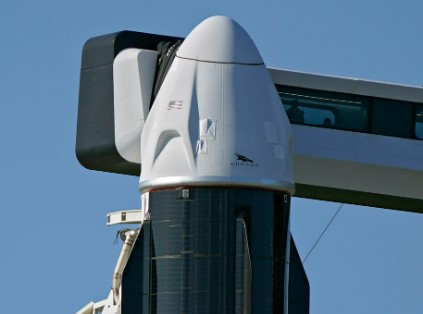A Chinese national faces sentencing in a Los Angeles federal court after pleading guilty to flying a hacked drone over Vandenberg Space Force Base on November 30, 2024. The unauthorized flight raised serious security concerns, as the hacked drone evaded detection for nearly an hour over the restricted military site.
Unauthorized Drone Flight Over Military Base
Modified to bypass altitude limits, it highlights the growing threat of consumer drones being hacked for surveillance, posing challenges for national security.
Vandenberg’s advanced security systems detected an unauthorized hacked drone entering restricted airspace and flying at an altitude of approximately 5,280 feet. This height is nearly a mile above ground level, far exceeding the legal limit for recreational drones, which is restricted to 400 feet by the Federal Aviation Administration (FAA). The drone remained airborne for almost an hour before authorities traced its flight path back to a public park adjacent to the base.
Security personnel were dispatched to investigate and found the individual in the park attempting to conceal the drone inside a jacket. Upon questioning, authorities confirmed that the same drone had violated the airspace above the military base.
China’s Offshore Money in SpaceX Raises Fears of Tech Espionage
A closer examination of the drone’s memory and the individual’s electronic devices revealed several aerial photographs of the installation, confirming unauthorized surveillance activity. Since Vandenberg Space Force Base plays a crucial role in national security and space operations, any unauthorized drone activity in its vicinity is considered a serious offense.
Premeditated Drone Hacking for Surveillance
Further investigations uncovered evidence suggesting that the hacked drone operation was not accidental. A forensic search of the individual’s phone revealed prior searches for “Vandenberg Space Force Base drone rules.” This indicates that the operator was aware of airspace restrictions but still proceeded with the unauthorized flight.
More concerning was a series of messages discussing methods to hack or modify the drone, allowing it to exceed its standard altitude limitations. Consumer drones are typically designed with built-in safety measures such as geofencing and altitude caps. However, experts warn that these restrictions can be bypassed using software modifications, allowing hacked drones to fly higher and enter restricted areas.
GPS Breakthrough : How Space Tech is Enhancing Global Positioning Systems
Authorities also discovered that the individual had recently returned from China in February 2024, just nine months before the hacked drone incident. This timeline has been factored into the legal proceedings as federal prosecutors argue for strict sentencing. The presence of aerial photographs and attempts to conceal the drone further strengthen the argument that this was a deliberate security breach rather than an accidental violation of airspace laws.
Legal Consequences and Security Concerns
The individual has pleaded guilty to violating national defense airspace and now faces severe legal consequences. Court documents indicate that the possible penalties include up to one year in federal prison, a year of supervised release, and a maximum fine of $100,000. The case highlights the significant risks associated with unauthorized drone flights over restricted areas, particularly around critical military facilities.
This incident also underscores growing concerns over drone regulations and airspace security. While consumer drones come equipped with safety measures, modifications remain a challenge for enforcement agencies. The FAA requires recreational drone operators to follow strict guidelines, including maintaining a maximum altitude of 400 feet and avoiding restricted airspace. However, cases like this demonstrate how advanced drone technology can be exploited for unauthorized activities.
Vulnerable Skies: How GPS Jamming Endangers Aviation Safety
To prevent similar security breaches, military bases and high-security facilities have invested in sophisticated drone detection and countermeasure systems. Vandenberg’s ability to identify, track, and respond to the unauthorized drone prevented further surveillance of the installation. The case also highlights the ongoing efforts by regulatory authorities to enforce airspace restrictions and hold violators accountable.
With drones becoming increasingly accessible and technologically advanced, security agencies must continue to refine their strategies to detect and prevent unauthorized drone activity.




